Last updated: June 12, 2020
Article
YMCA Service Clubs at Vancouver Barracks During World War I
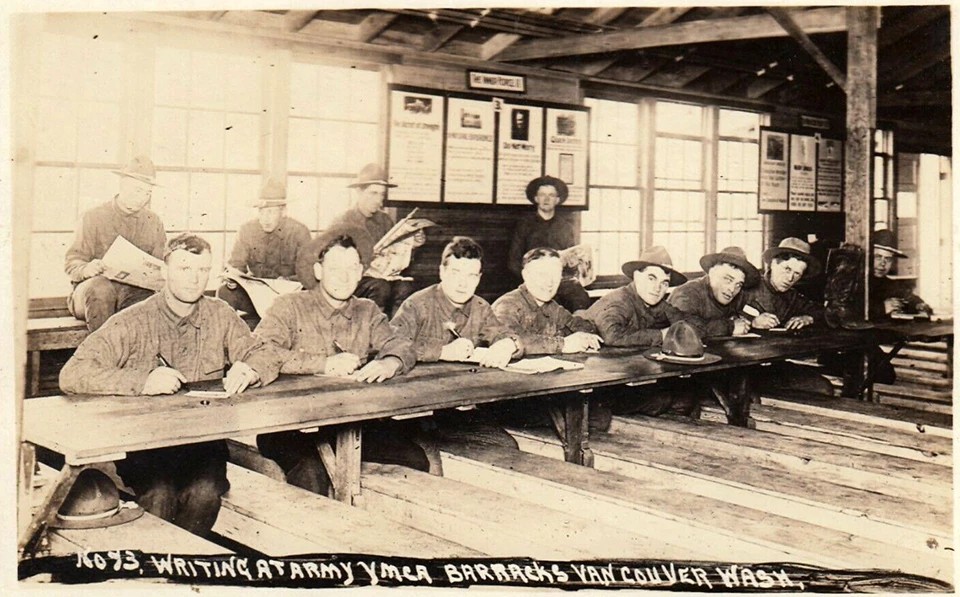
Fort Vancouver National Historic Site, recent donation
The YMCA, or Young Men's Christian Association, was founded in 1844 with the mission to provide healthy activities and housing to urban men. In 1902, Congress authorized the establishment of YMCA facilities on military post. In 1917, YMCA leader John Mott worked to involve the YMCA in the operations of canteens and post exchanges at American military posts in the United States and France. During the war, 25,926 YMCA workers were stationed at these posts globally, including 5,145 women workers. Learn more about the history of the YMCA here.
At Vancouver Barracks, YMCA No. 1 was located north of Officers' Row, in a wooded area known as the "cantonment." YMCA Service Club No. 2 was located centrally at Vancouver Barracks. YMCA No. 3 was located in the southern part of the post, near the Spruce Mill itself.
The November 2, 1918, issue of the soldiers' paper Straight Grain described the importance of the YMCA as a hub for soldiers writing letters home:
"Although no meetings are allowed [due to a quarantine for the Spanish flu], the men still use the 'Y' as their club, and many are the letters that go through the mail-drawer on the desk. Between 1200-1500 letters are mailed at our 'Y' alone every day."
The "Y" was also the site of government-sponsored reading classes for soldiers. Reports in the Straight Grain describe the fireplace at the "Y" as a popular and "cozy" place for soldiers to gather to read books from the post library.
The "Y" facilities were also the sites of social events. In the November 30, 1918, issue of the Straight Grain, the following was reported:
"'Y' MEN TO HAVE SOCIAL
The secretaries of the 'Y' No. 3, at the mill, are to be the hosts tonight (Saturday) to the secretaries of the other buildings. They are to gather at 9:30 when the buildings will close, and expect to have a very lively time among themselves."
Another article printed in the November 30 Straight Grain described the wide variety of activities at the three YMCA locations:
"AROUND THE CAMP 'Y'S
The Y.M.C.A. 'played to crowded houses' as usual this week.
Dr. Pratt, of Portland, addressed a large crowd at the old Post 'Y,' Sunday.
Monday the film 'Treason' was seen by an enthusiastic crowd, and the picture was pronounced one of the best the Y had shown. The entertainment Tuesday was provided by Miss Elsie May Gordon, reader and impersonator, and by a 'sing' directed by Lieutenant Foster. Wednesday the picture, 'Play the Game' was shown, and there was a concert by Portland talent Thursday evening. Last night there was another film, 'Blackmailer.'
There will be a regular Sunday service, and in the evening a 'sing' will be held, followed by an address by Dr. Connor. There will be movies Monday, Wednesday and Friday and a 'sing' Monday.
At the Cantonment 'Y,' Chaplain Bergen's Sunday morning sermon was heard by many appreciative soldiers. There was singing at this service by Lieutenant Foster, and a choir organized and led by Pvt. McCord. There was also a large crowd at the service Sunday night.
A feature of the week was the Memorial service Wednesday night in honor of the American soldier dead. Movies during the week were viewed by packed houses who pronounced the films among the best they had seen.
At 'Y' No. 3, as the building at the mill is called, free movies can always be seen on Monday, Wednesday and Friday night. On every Tuesday night, Miss Flynn arranges an attractive musical program.
Wednesday night is always athletic night, when good cards of boxing and wrestling will be seen.
The sing-songs, which were becoming so popular just before the [Spanish flu] quarantine, will be held on Friday nights, under live song leaders.
Every Sunday at 9:30 A.M. Chaplain Hoag holds the regular 45-minute regimental military service.
As the war ended and troops were demobilized and returned home, the YMCA facilities were used for educational programs meant to help soldiers transition back to civilian life. On December 14, 1918, the Straight Grain advertised these educational programs:
The three YMCA buildings were a central part of off-duty life. The activities there raised morale during a time of war and helped soldiers transition to civilian life after the war's end. All three buildings were demolished in the early 20th century, but Army records, newspaper articles, and photographs help to remind us of this important aspect of daily life at Vancouver Barracks during World War I."During the few weeks that the men of the Spruce Division are in Vancouver awaiting demobilization, the YMCA will carry on a program of education. Everything in that program will center on the one idea of the return to civil life...Methods of work have changed, organization of industry has changed; most important of all, ideas have changed...The thought of the YMCA is to get together the men who are interested in the same trade or profession and let them exchange their ideas and experiences and get acquainted. Friends in your own line of work are valuable sometimes. Then from time to time the 'Y' will bring in men of learning or wide experience in the different fields to talk to the men of the camp, and to meet with the groups or with individuals to discuss questions that are of especial interest...[discussion groups] are taking up the questions involved in the relations, labor and industry, and coming peace...From time to time the 'Y' will bring in speakers on the problems of democracy...Provision is also being made for those wishing to learn the English language."
Below, learn more about each of the YMCA locations at Vancouver Barracks.
YMCA No. 1
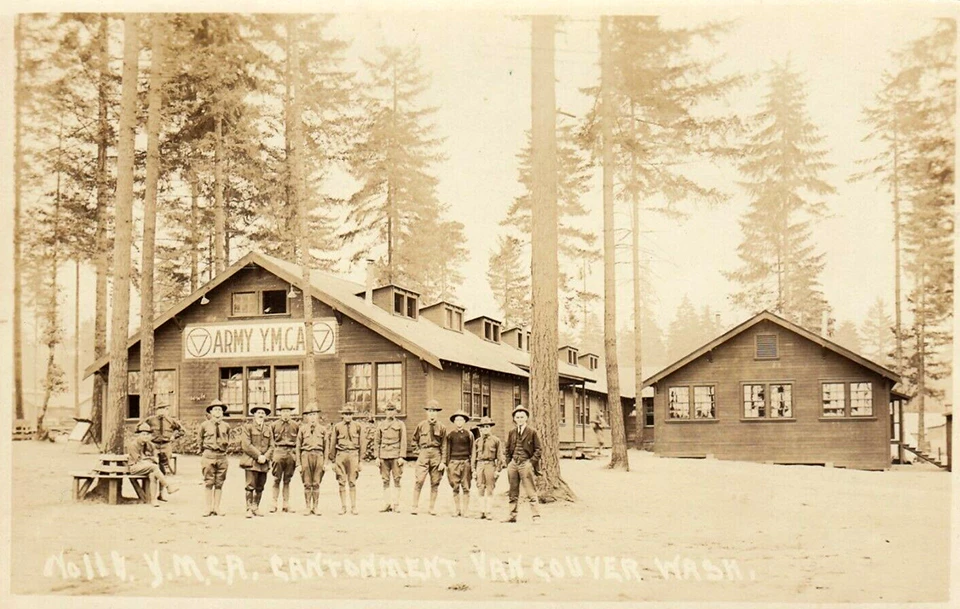
Fort Vancouver National Historic Site, recent donation
This photograph postcard shows YMCA No. 1, which stood in the Vancouver Barracks "cantonment" area to the north of Officers' Row.
According to the December 7, 1918, issue of the Straight Grain, this was the location of daily meetings of "democracy discussion groups." These gatherings were "part of the educational work of the Y.M.C.A. among the soldiers who were returning home" after the end of World War I in November 1918. Participants in these discussion groups learned about current events, news they may have missed while they were focused on their military service. As the Straight Grain explained, "The aim is to present questions, answers and opinions among the men at the dawn of a new peace." Discussion topics included: political democracy in the United States and other countries, social democracy, human values, social welfare, "industrial democracy" and worker's rights, and international relationships between nations. With these lessons, soldiers were meant to "return to their homes with more than a recollection of drills and commands. [The discussion groups'] aim is to make the men understand what the war was all about as well as the fact that much remains to be done."
YMCA No. 1 was also the site of an Italian soldiers' club, formed by soldiers at Vancouver Barracks of Italian descent and Italian immigrants. The club purchased an Italian flag for display in the YMCA building. The November 23, 1918, Straight Grain reported that the "Italian boys although doing their duty under the Stars and Stripes, feel proud of the great victory that the Italians won on the Piave. Their love for their mother country is not unequal to that of the adopted one; for while they believe that America was the main factor in winning the war, they also feel that Italy, through its powerful armies, was an indispensable element in bringing about the speedy close we have witnessed."
YMCA No. 2
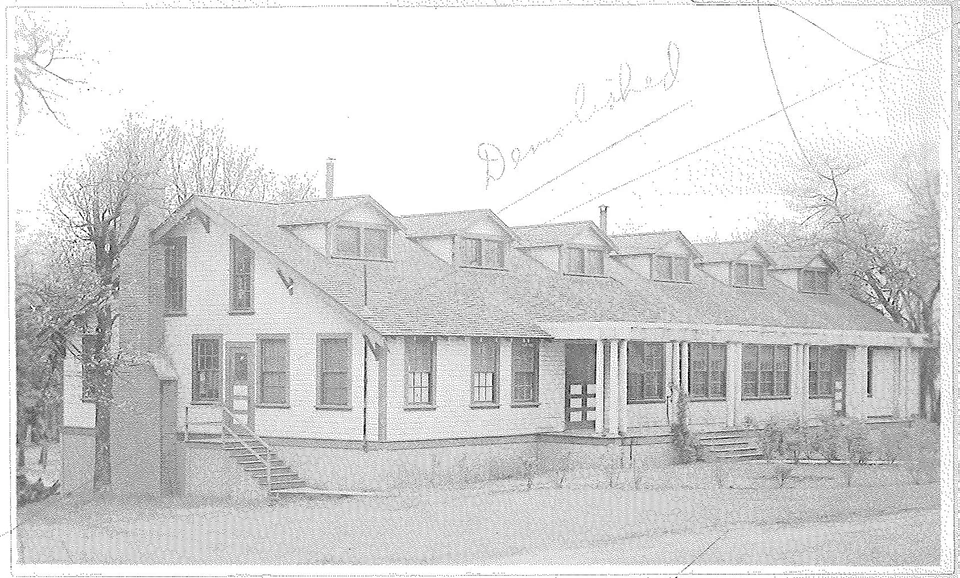
US Army
YMCA Service Club No. 2 was constructed in 1917. In fall 1918, YMCA No. 2 was vacated by the YMCA and "filled with beds" in preparation for victims of the Spanish flu epidemic. As reported in the November 2, 1918, issue of the Straight Grain, "fortunately, no really sick men have been found to fill it. It is occupied at present by suspect cases."
On Christmas Eve 1918, a holiday celebration, complete with a visit from Santa Claus, took place at YMCA No. 2. The Straight Grain reported: "There was a Santa Claus, who boasted the appropriate corpulency and had the right kind of whiskers and plenty of red in his jovial countenance." Santa distributed "candy, fruits and other dainties to the big crowd of soldiers."
The only known image of this building, which was demolished around 1926-28, came from the US Army's Quartermaster Records. However, in 2019 Fort Vancouver National Historic Site's Cultural Resources staff discovered that the building could be seen in an aerial photograph of Vancouver Barracks in the collection of the National Archives and Records Administration. This photograph is significant because it shows the exact location of YMCA No. 2 at Vancouver Barracks.
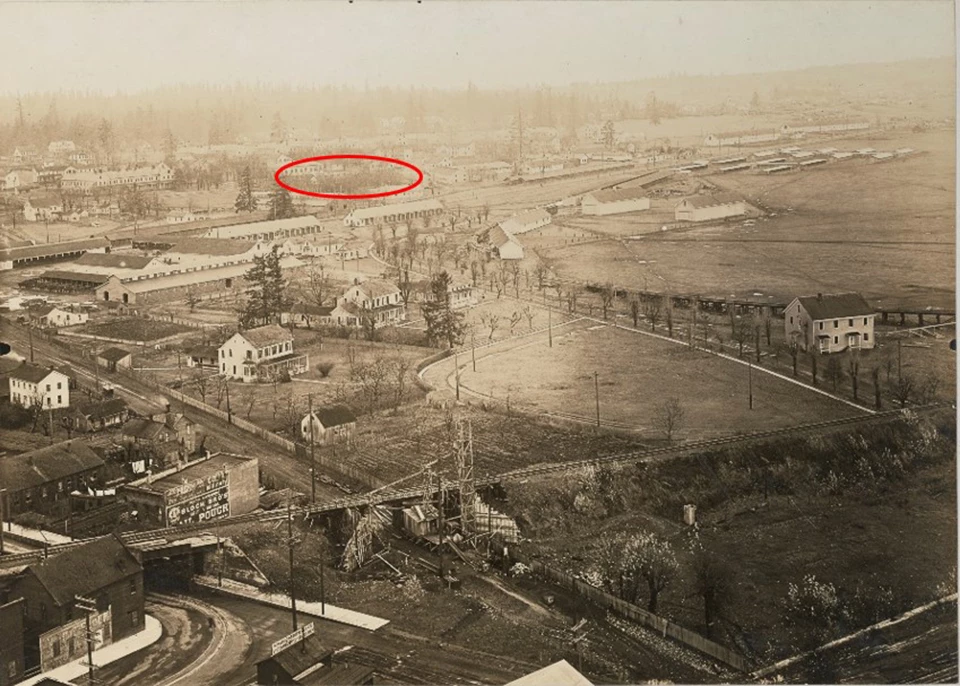
National Archives and Records Administration, Record Group 165, ID 31490193
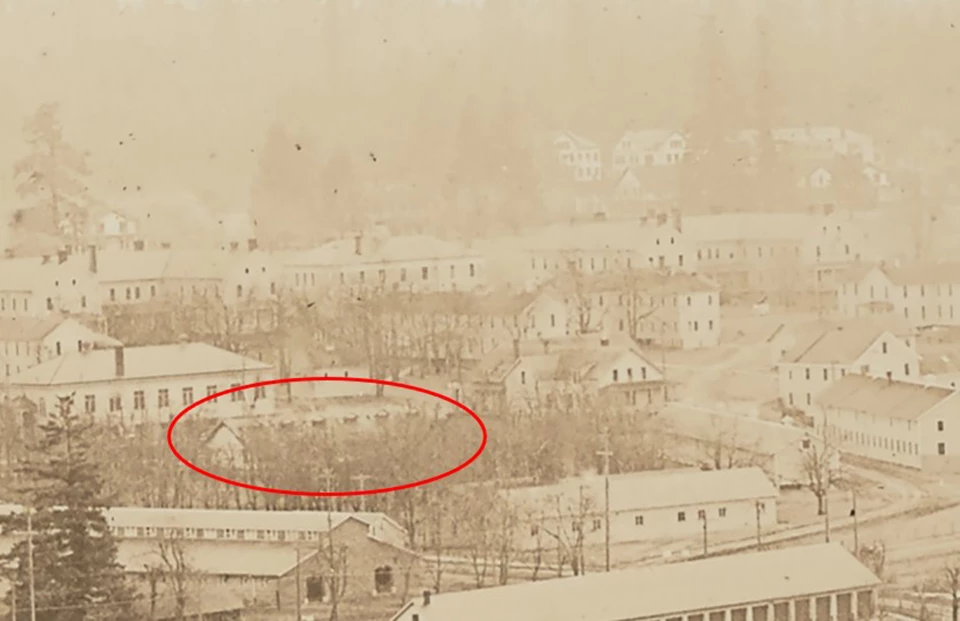
National Archives and Records Administration, Record Group 165, ID 31490193
YMCA No. 3
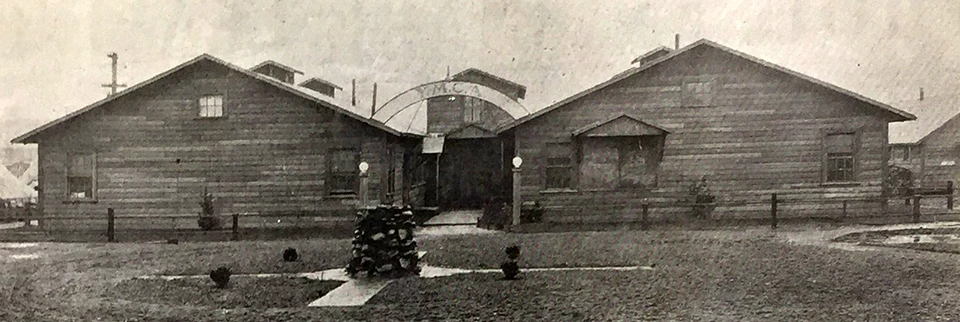
Fort Vancouver National Historic Site
This image of YMCA No. 3 appeared in the December 28, 1918, Straight Grain, along with an article on recent improvements made to the building, including landscaping and the installation of a lighting system.
